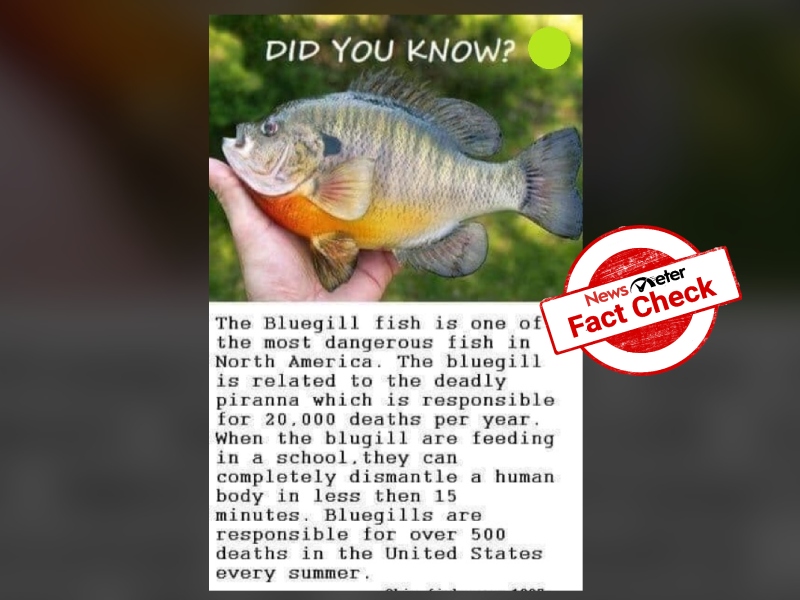Fact Check: Viral claims that Bluegill is most dangerous fish in North America are FALSE
By Mounika Dasari
Hyderabad: A story circulated on social media claimed that bluegill fishes pose a danger to human beings. Facebook user Crystal Bast recently posted the image, which notched 9,300 shares.
"Bluegill is one of the most dangerous fish in North America. The bluegill is related to the deadly piranha which is responsible for 20,000 deaths per year. When the bluegills are feeding in a school, they can completely dismantle a human body in less than 15 minutes. Bluegills are responsible for over 500 deaths in the United State every summer," reads the caption of the picture
There are two Claims in the post:
One is Bluegill is one of the most dangerous fish in the world and;
Two, they're related to piranhas.
Archived claim can be found here.
Fact Check:
Both the claims are FALSE.
The bluegill is from the sunfish family, which is known as Centrarchidae. Piranhas are in the Serrasalmidea family. The two species might have a vaguely similar body shape and are both freshwater fish, but that's really where the similarities end.
Crystal Blast, who recently posted it, said: "It probably started a joke. One person shared it like me... knowing it's not true and funny... and it all went downhill from there".
This fact check was done by Snopes when similar kinds of posts were circulating on social media in 2018. "There is no record of bluegill fish-killing a human being — ever — much less being responsible for the deaths of 500 people every summer".
Piranhas are mostly found in South American rivers and are omnivores. There are documented cases where people who were eaten by piranhas were rare. They do not kill 20,000 people a year. They cannot dismantle a human body in 15 minutes, and in fact, probably can't break the skin.
A Politi Fact Check last year pointed out that "Ohio Fish News," where the information came from, isn't even a real publication.
So, Bluegill Fish is not dangerous and human eating as claimed and is NOT related to Piranha fish. Hence, we rule out this claim to be FALSE.